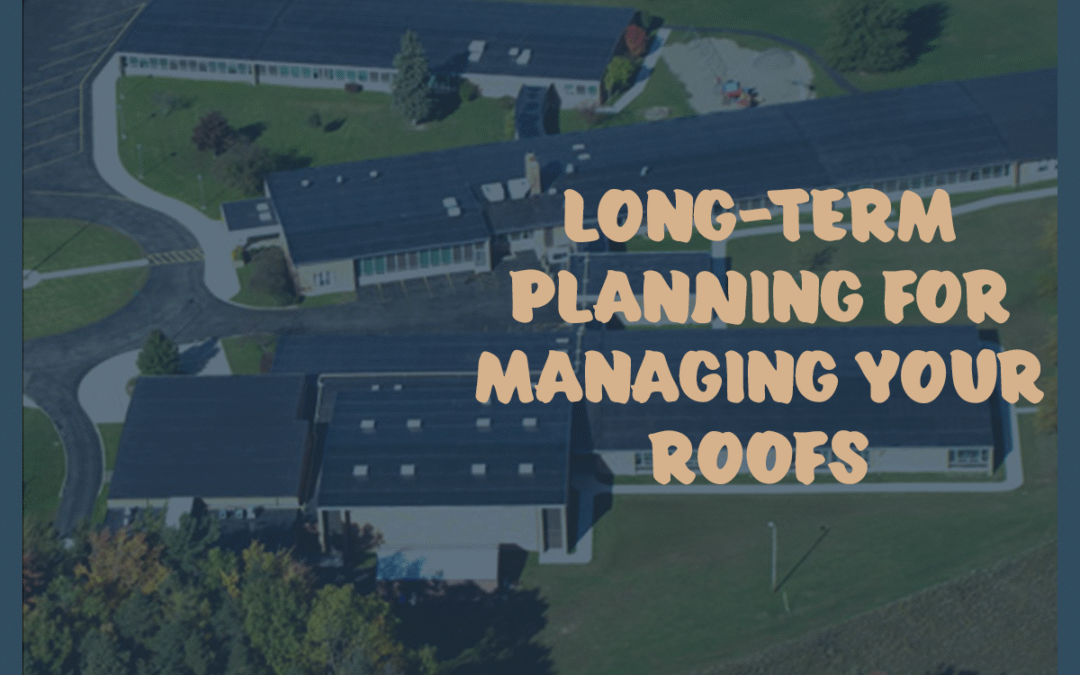Whether you manage a single commercial building or a portfolio of properties, the roof over each facility is one of your most valuable — and most vulnerable — assets.
And yet, roof expenses often appear in budgets only when something goes wrong: emergency repairs, water damage, unexpected replacements.
That reactive approach makes it hard to plan, harder to control costs, and nearly impossible to forecast with confidence.
There’s a better way.
At Grove Roofing, we help SMB leaders create long-term roofing plans that turn uncertainty into predictability. When your roofs are tracked, maintained, and prioritized over time, you gain better control of capital planning, fewer surprises, and a clear strategy to make more informed business decisions.
Here’s how to build a long-term roofing plan that supports smarter budgeting and asset management.
Planning Starts with Inventory
Start by compiling a complete inventory of every roof in your portfolio. This foundational step gives you visibility into what you’re working with and sets the stage for smarter planning.
Your inventory should include:
- Building location
- Square footage
- Roof type and system
- Age and installation date
- Warranty details
- Last inspection or service
- Known issues or repair history
Schedule Inspections and Condition Reports
Once your inventory is built, the next step is to understand the current condition of each roof.
A professional inspection paired with a written condition report gives clarity on where things stand and what to expect in the years ahead.
A detailed condition report can inform other parts of your financial planning and forecasting. That includes estimated remaining service life, prioritized repair needs, and timing recommendations for future replacement.
Assess Your Roof by Lifecycle Stage
Not every roof needs the same level of attention. Grouping your assets by age and condition helps you allocate resources appropriately and avoid over- or under-investing.
We recommend three lifecycle categories:
- Healthy (0–5 years): These roofs typically require only routine service and light maintenance. Budget for basic inspections and upkeep.
- Mid-Life (6–13 years): This is where proactive care pays off. Budget for more frequent inspections, spot repairs, and preventive maintenance to extend useful life.
- Aging (14+ years): Plan for replacement within the next 2–3 budget cycles. These roofs should be inspected more often, and small issues should be addressed quickly to prevent major failures.
Create a Rotation Strategy
If you manage multiple buildings, staggering major roofing work is essential for balanced capital planning.
A rotation strategy ensures you’re not facing multiple large replacements in the same year — something that can strain budgets and delay other facility upgrades.
By planning ahead, you can:
- Smooth out capital expenditures
- Prevent emergency disruptions
- Negotiate better material pricing and scheduling with your contractor
Budget for Maintenance and Contingency Funds
Every roof should have its own annual maintenance line item. That includes regular service visits, drain cleanings, minor repairs, and snow removal in high-impact winters.
In addition, we recommend setting aside a modest contingency fund for each building, typically 10–15 percent of your anticipated annual roofing spend. This gives you flexibility when the unexpected happens without throwing off your entire capital plan.
Proactive care doesn’t just prevent emergencies. It also extends roof life, improves warranty compliance, and protects the interior assets your business relies on.
Long-Term Planning, Long-Term Savings
A well-structured, long-term roofing plan helps you shift from reactive to strategic. You’re forecasting with clarity, making informed decisions, and presenting strong, well-documented funding requests for roofing maintenance and repairs that need to happen.
Your real estate as a business is a long-term asset. Buildings should be treated — and budgeted — as such.
We work with Buffalo-area businesses to assess, document, and prioritize roofing needs across commercial portfolios. Whether you’re managing five roofs or fifty, we’ll help you build a plan that keeps your facilities protected and your budgets on track.
Want help looking into your roof’s future? Contact Grove Roofing to schedule an inspection and assessment of what you need to address now and for years to come.

